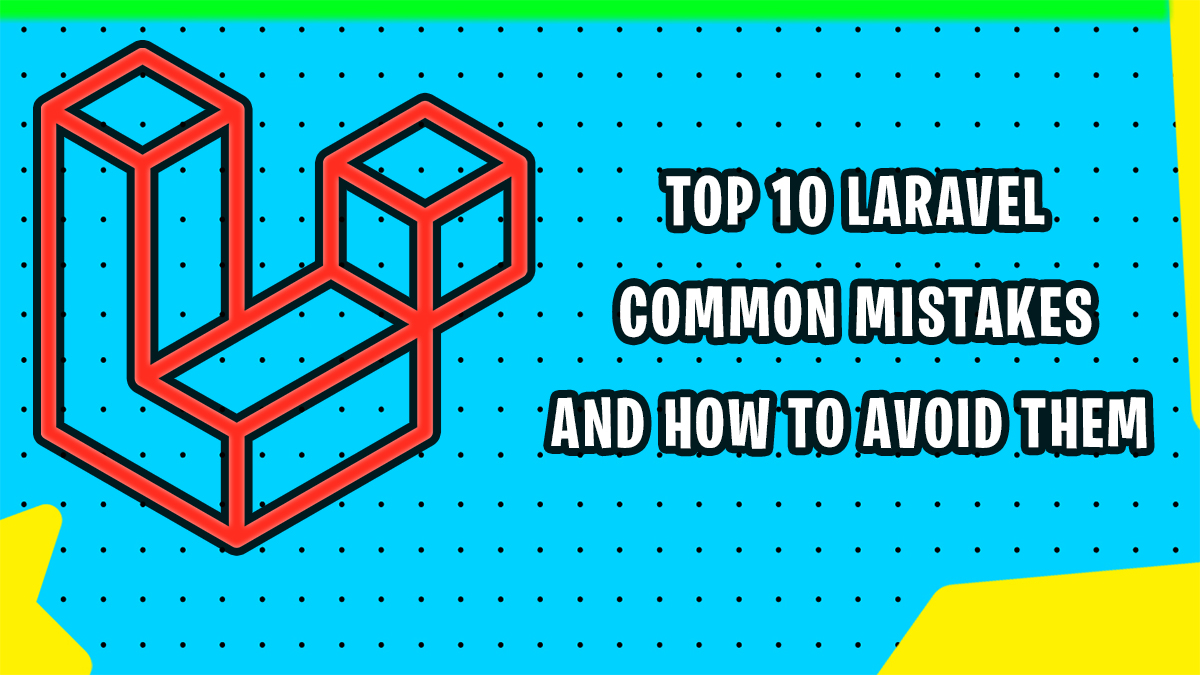Laravel is one of the most popular PHP frameworks used for developing web applications. However, even experienced Laravel developers can make mistakes that can cause problems in their code. In this blog post, we will discuss the top 10 Laravel common mistakes and how to avoid them.
1) Not following Laravel conventions
One of the most common mistakes that developers make when using Laravel is not following the framework’s conventions. Laravel has a set of conventions that developers should follow to ensure that their code is consistent and easy to read. These conventions include naming conventions, directory structures, and coding standards.
To avoid this mistake, it is essential to follow the Laravel conventions strictly. You can refer to the Laravel documentation for a complete guide on the conventions.
2) Overusing Eloquent
Eloquent is Laravel’s built-in ORM that simplifies database operations. However, overusing Eloquent can lead to performance issues in large-scale applications. Eloquent is not suitable for complex queries, and developers should use raw SQL queries for such operations.
To avoid this mistake, use Eloquent only for simple queries and raw SQL queries for complex operations. You can also use query builder to write complex queries.
3) Not using Laravel’s built-in authentication system
Laravel comes with a built-in authentication system that developers can use to secure their applications. However, some developers choose to implement their authentication system, which can be time-consuming and error-prone.
To avoid this mistake, use Laravel’s built-in authentication system to secure your application. It is easy to use and comes with features like user registration, login, and password reset.
4) Not using Laravel’s task scheduling feature
Laravel has a built-in task scheduling feature that developers can use to automate repetitive tasks. However, some developers choose to use third-party libraries, which can be complicated and unreliable.
To avoid this mistake, use Laravel’s task scheduling feature to automate repetitive tasks. It is easy to use and comes with features like task queuing and frequency.
5) Not caching data
Caching data is a common practice in web development that can significantly improve performance. However, some developers forget to implement caching in their Laravel applications.
To avoid this mistake, use Laravel’s caching system to cache frequently accessed data. It can help improve the performance of your application and reduce server load.
6) Not optimizing database queries
Database queries can be a performance bottleneck in web applications. However, some developers do not optimize their database queries, which can lead to slow page loading times.
To avoid this mistake, optimize your database queries by using indexes, reducing the number of queries, and caching data.
7) Not testing code
Testing code is an essential part of software development that can help catch bugs and ensure that your code works correctly. However, some developers do not test their code, which can lead to unexpected errors.
To avoid this mistake, test your code thoroughly using Laravel’s built-in testing tools. It can help catch bugs before they make it into production.
8) Not handling errors correctly
Error handling is an essential part of web development that can help improve the user experience. However, some developers do not handle errors correctly, which can lead to frustrated users and lost revenue.
To avoid this mistake, handle errors correctly by using Laravel’s exception handling system. It can help catch errors and provide users with useful feedback.
9) Not using version control
Version control is an essential tool for software development that can help track changes and collaborate with other developers. However, some developers do not use version control, which can lead to lost code and wasted time.
To avoid this mistake, use version control software like Git to manage your codebase. It allows you to track changes, collaborate with other developers, and roll back changes if necessary. It also provides a history of changes, making it easier to debug and fix errors.
10) Not updating Laravel regularly
Laravel is a rapidly evolving framework, with new updates and features being added regularly. However, some developers do not update their Laravel applications regularly, which can lead to security vulnerabilities and compatibility issues.
To avoid this mistake, keep your Laravel application up to date by regularly installing updates and patches. It can help improve the security and stability of your application.
Conclusion:
Laravel is an excellent framework for developing web applications. However, to get the most out of it, developers must avoid these common mistakes. By following the Laravel conventions, optimizing database queries, and using built-in features like authentication and caching, developers can create high-performance, secure, and stable applications. Using version control and updating regularly can also help improve collaboration and reduce errors. By avoiding these mistakes, developers can take their Laravel skills to the next level and build great applications.
